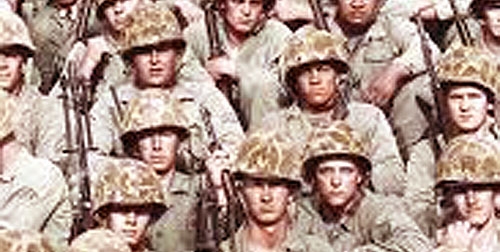The Cold War - The Korean War
 Standing before the United Nations General Assembly during the Fall of 1950, U.S. Secretary of State Dean Acheson reminded the diplomats that five years earlier, when the U.N. Charter was conceived, it was agreed that the institution should have a military arm with which to enforce its edicts. Written two years prior to the Korean War, this article is about the joint occupation of Korea - the Soviets in the industrialized North, the Americans in the agrarian South, and how poorly both regions were being served before the 1950 war: "The issue in Korea is not Communism vs. Americanism, but occupation-trusteeship vs. freedom. On that issue, both Russia and the United States would lose after a free vote of the people, because the two powers have, each in their own way, failed Korea."
The Soviet Army moved into northern Korea during the August of 1945, click here to read about it...
"While the fighting raged on the central front the negotiators at Panmunjom rapidly approached an agreement on armistice terms. The July 19th (1953) agreement was reached on all points by both sides. The next day liaison and staff officers began the task of drawing up the boundaries of the demilitarized zone... At 1100 hours on July 27, Lieutenant General William K Harrison, Jr., the senior United Nations delegate to the armistice negotiations, signed the armistice papers. At the same time the senior enemy delegate, General Nam Il, placed his signature on the documents." "The Truman Doctrine for Greece and Turkey may soon have to be applied to South Korea, if the Soviets continue to sabotage the Moscow Agreement as they have done in the past."
The Soviet Army moved into northern Korea during the August of 1945, click here to read about it... "Fighting in Korea ended under a truce effective July 27. It is a well known fact, though, that the truce is no guarantee that fighting won't start again. The UN wants to work out an agreement with the Reds that will mean no more war for Korea."
- and work it out they did; the truce has held for some sixty-five years. This article concerns all the various minutia both sides had to agree to in order to reach the agreement. Attached is an article concerning a page from American Military History and it outlines the losses and gains of the Korean War (1950 - 1953). In five sentences this article gives the number of American dead and wounded, the number of U.N. dead and wounded and the amount of ground lost to the Chinese and North Korean military; a map of the stabilized front is provided. |
MORE ARTICLES >>> PAGE: * 1 * 2 * 3 * 4 * 5 * 6 * 7 * 8 * 9 * 10 * 11 * |
|